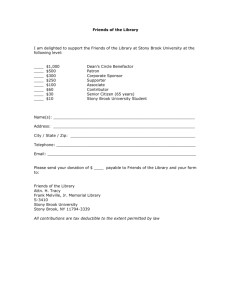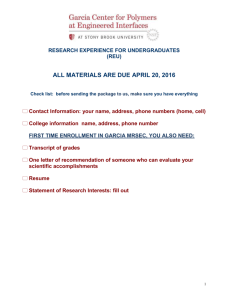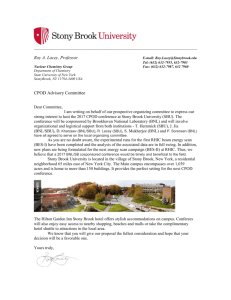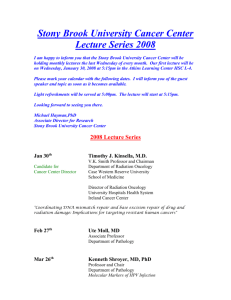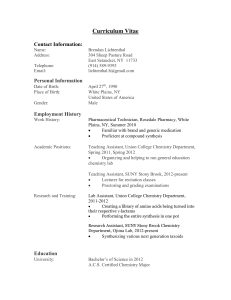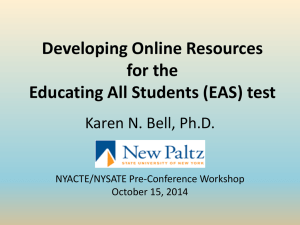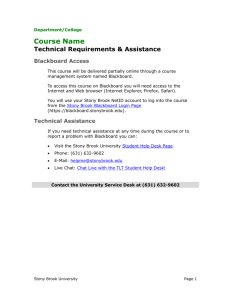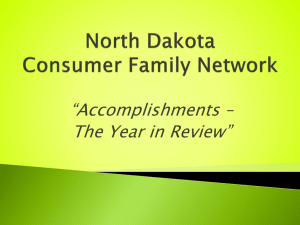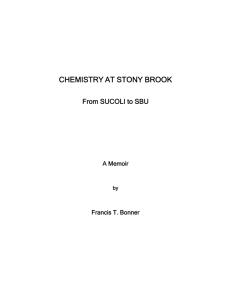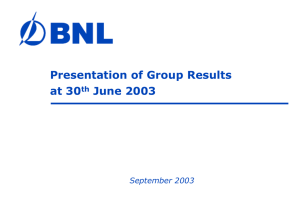SWaSSiT - Stony Brook University
advertisement
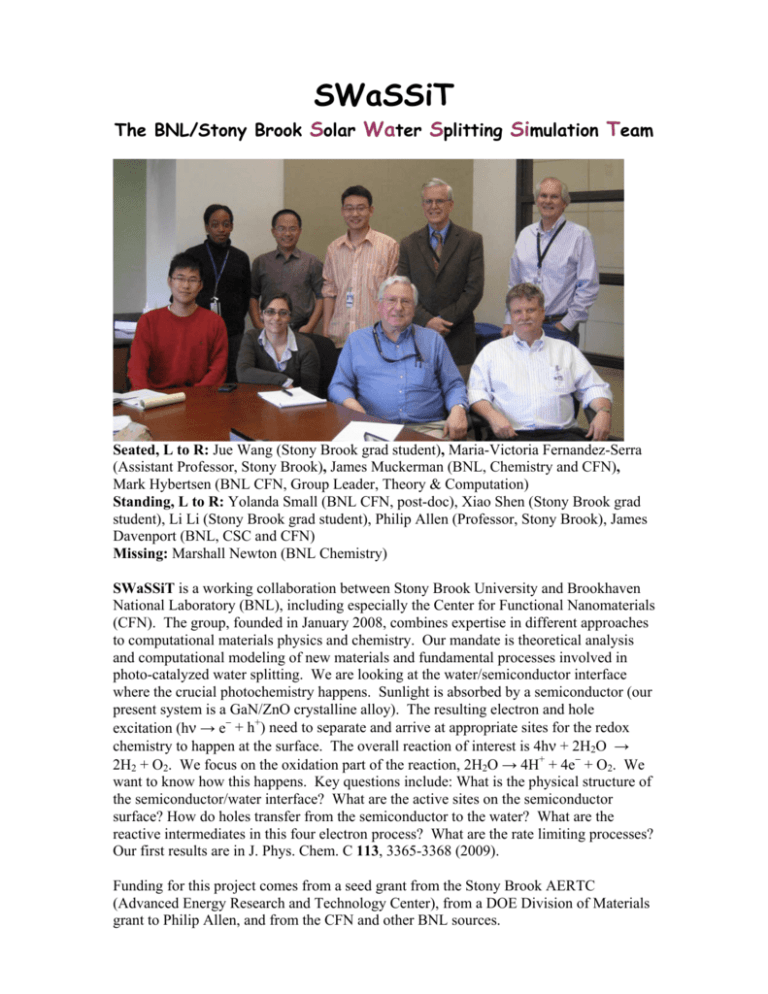
SWaSSiT The BNL/Stony Brook Solar Water Splitting Simulation Team Seated, L to R: Jue Wang (Stony Brook grad student), Maria-Victoria Fernandez-Serra (Assistant Professor, Stony Brook), James Muckerman (BNL, Chemistry and CFN), Mark Hybertsen (BNL CFN, Group Leader, Theory & Computation) Standing, L to R: Yolanda Small (BNL CFN, post-doc), Xiao Shen (Stony Brook grad student), Li Li (Stony Brook grad student), Philip Allen (Professor, Stony Brook), James Davenport (BNL, CSC and CFN) Missing: Marshall Newton (BNL Chemistry) SWaSSiT is a working collaboration between Stony Brook University and Brookhaven National Laboratory (BNL), including especially the Center for Functional Nanomaterials (CFN). The group, founded in January 2008, combines expertise in different approaches to computational materials physics and chemistry. Our mandate is theoretical analysis and computational modeling of new materials and fundamental processes involved in photo-catalyzed water splitting. We are looking at the water/semiconductor interface where the crucial photochemistry happens. Sunlight is absorbed by a semiconductor (our present system is a GaN/ZnO crystalline alloy). The resulting electron and hole excitation (hν → e− + h+) need to separate and arrive at appropriate sites for the redox chemistry to happen at the surface. The overall reaction of interest is 4hν + 2H2O → 2H2 + O2. We focus on the oxidation part of the reaction, 2H2O → 4H+ + 4e− + O2. We want to know how this happens. Key questions include: What is the physical structure of the semiconductor/water interface? What are the active sites on the semiconductor surface? How do holes transfer from the semiconductor to the water? What are the reactive intermediates in this four electron process? What are the rate limiting processes? Our first results are in J. Phys. Chem. C 113, 3365-3368 (2009). Funding for this project comes from a seed grant from the Stony Brook AERTC (Advanced Energy Research and Technology Center), from a DOE Division of Materials grant to Philip Allen, and from the CFN and other BNL sources.
